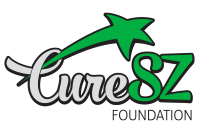
Dr. Stephen Brannan, Chief Medical Officer at Karuna Therapeutics
A Look Inside the Intricate Journey of Bringing New Psychiatric Medicines to Patients in the U.S.
The brain is one of the most complex organs in the human body – yet how exactly it works is still largely unknown. I knew early on that I wanted to better understand how the brain works, and its role in how we think, feel and behave. When I became a psychiatrist, I realized the impact an effective medicine and treatment plan could have in significantly improving a patient’s quality of life.
Since entering the pharmaceutical industry, I’ve played an active role in the research and development of new medicines for various conditions, including schizophrenia. But what exactly does it take to develop a new medicine for those living with mental health conditions?
The process of developing new medicines is one that requires significant time, resources and, most importantly, an unwavering commitment to those in need. It takes an average of 10 years for a new medicine to be discovered, developed and ultimately reach the hands of patients.1 This development process is overseen by the U.S. Food and Drug Administration (FDA) to ensure medicines are both effective and safe.
In psychiatry, it is particularly challenging to find a treatment that is effective for the constellation of symptoms accompanying most conditions. One reason it is challenging is the lack of well-known biomarkers, which are measurable indicators of the presence or severity of a disease or condition. Biomarkers, such as heart rate and blood pressure, can help identify whether systems of the body are working properly, and therefore can be incredibly helpful in the diagnosis and treatment of illnesses. Although we lack well-established biomarkers in psychiatry, we have developed other tools to help us understand the presence and severity of conditions. For example, physicians use the Positive and Negative Syndrome Scale (PANSS), a medical scale consisting of a series of standardized questions, to understand the severity of symptoms a person with schizophrenia may experiencing.2 This scale is also used as a benchmark to track whether medicines are helpful in decreasing the presence of one’s symptoms. The reliance on diagnostic tools such as this is only one way in which psychiatry is very distinctive from other areas of medicine.
Psychiatric drug development in the U.S. involves thorough testing to ensure medicines are safe and effective before they are available to patients, and typically follows a five-step process.3
1. Drug discovery: Drug discovery is the process through which potential new treatments are identified. Here, thousands of compounds are assessed for further development – however, only few will demonstrate promise.
2. Preclinical Research: Once a compound is identified, it will enter ‘pre-clinical research’ where it will undergo further testing in animals. This is to confirm it meets basic safety requirements before it is studied in humans. It is estimated that slightly under 10% of compounds studied in preclinical research will move forward to clinical studies.4
Preclinical research is particularly challenging in psychiatry, as testing in animals does not always give reliable indicators of effectiveness in humans.
3. Clinical Research: Clinical research involves studies in human volunteers. There are various phases of clinical research that vary in size and purpose to ensure a drug is safe and effective.
Phase 1 studies are the first phase of research. These studies seek information on the safety and appropriate dose of the potential medicine and are typically conducted in 20 to 100 people to ensure the medicine is safe before studying a larger population.
Phase 2 studies typically include several hundred people who have the disease or condition being researched. These studies focus on determining how helpful the medicine is in treating the disease or condition, and what side effects people may experience from taking the medicine.
Phase 3 studies can include up to 3,000 people living with the disease or condition being researched. These studies confirm how helpful the treatment is, and what side effects it may produce, but are larger in size as they aim to provide a definitive assessment of the benefits of the medicine for patients.
As mentioned earlier, the effectiveness of treatments for mental health are measured by questionnaires that are administered throughout the course of the trial. This helps determine whether people feel better while taking the medicine over time.
4. FDA Review: Once the required research is complete, and if it supports a drug being safe and effective for its intended use, companies can submit an application to the FDA for review. The FDA then decides whether or not to approve the medicine.
5. FDA Post-Market Safety Monitoring: Once the drug is approved by the FDA and accessible to patients, the FDA and the company marketing the drug will continue to monitor the safety of the medicine to ensure it is appropriate for continued use.
As the process underscores, persistent dedication is required to successfully develop new medicines. Although the path to developing treatments for psychiatric conditions has historically been challenging, my colleagues and I at Karuna are not deterred. My career as a physician and drug developer continues to reinforce my dedication to clinical research in psychiatry, as it is critical to advancing new and more effective treatments for those in need.
1. PhRMA. Biopharmaceutical Research & Development: The Process Behind New Medicines. PhRMA, 2015.
http://phrma-docs.phrma.org/sites/default/files/pdf/rd_brochure_022307.pdf.
2. Opler, Mark G.A., Christian Yavorsky , and David G. Daniel. “Positive and Negative Syndrome Scale (PANSS) Training.” Innovations in Clinical Neuroscience 14 (December 1, 2017): 77–81.
3. “The Drug Development Process.” U.S. Food & Drug Administration. FDA, January 4, 2018.
https://www.fda.gov/patients/learn-about-drug-and-device-approvals/drug-development-process.
4. Lowe, Derek. “The Latest on Drug Failure and Approval Rates.” Science Translational Medicine, May 9, 2019.
https://blogs.sciencemag.org/pipeline/archives/2019/05/09/the-latest-on-drug-failure-and-approval-rates.

